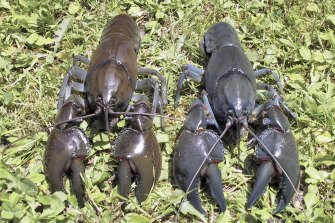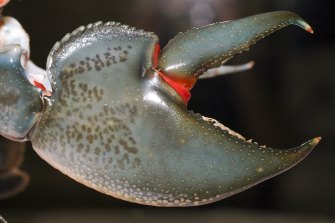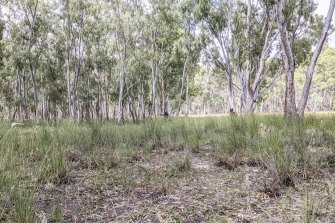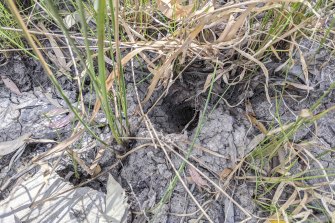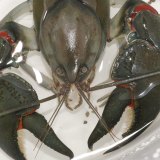‘What lurks beneath?’ How scientists discovered a new ‘prize-fighter’ yabby

For years, Dr Tarmo Raadik had heard rumours of extra-large yabbies from the old farmers and fishermen he met in his job as an aquatic research scientist.
But it wasn’t until a woman who lived near Lake Nillahcootie in central Victoria brought him an exoskeleton – the tough outer shell – of an unusual crayfish in 1995 that he had a physical specimen to examine.
The swamp yabby. The species has larger, wider claws and is bulkier than a normal yabby. Credit:Tarmo Raadik
The most obvious difference with a common yabby was the chunky claws.
“The claws are much wider and the moveable ‘finger’ is quite sickle-shaped,” says Dr Raadik, who works at the Arthur Rylah Institute for Environmental Research.
He also suspected, judging from the fragmented specimen, that this yabby was heavier and bulkier, a “prize-fighter” in the freshwater crayfish world.
Later that year, staff from the institute who were researching Murray cod at the Barmah forest, in northern Victoria, talked to old-time commercial fishers who agreed they had seen these big, meaty yabbies in the region but were secretive about the location.
The swamp yabby claw.Credit:Tarmo Raadik
After that, the trail went cold. But occasionally, members of the public with stories of a mysterious crayfish would approach Dr Raadik.
There was the guy using a backhoe to drill metre-deep holes on his property near Nagambie who saw big yabbies clambering out of the ground. And the road workers who boiled up three giant yabbies in their lunchtime billy after they found them scurrying from the upturned earth.
Dr Raadik even saw one lying atop a pile of cooked yabbies at the Ringwood Fish Market one Christmas. But, alas, he needed to pay cash and by the time he had run back from the ATM, the mystery mega-yabby had been sold.
Eventually, he teamed up with Rod McCormack, a NSW freshwater crayfish researcher with the private firm Australian Aquatic Biological, who set about searching the Millewa Forest, on the Murray in southern NSW.
The kind of landscape where the swamp yabby lives in deep burrows.Credit:Tarmo Raadik
With the guidance of traditional owners, Mr McCormack dug down more than 1.5 metres through dry clay pans and found the big-clawed, chunky yabbies living in burrows.
Dr Raadik’s suspicions were right: this was a new species of freshwater crayfish, known as the swamp yabby, cherax latimanus. It’s the first time in 80 years that a new yabby species in the Murray-Darling Basin system has been formally described, making the swamp yabby only the third species known to naturally occur in the basin.
The swamp yabby is found in Victoria’s Goulburn, Broken and Ovens river catchments, and as far north as Deniliquin in NSW. It is not believed to be endangered.
A swamp yabby hole.Credit:Tarmo Raadik
Unlike the common yabby, the swamp yabby is not found in streams or billabongs, but spends most of its time in extensive burrows near roadside drains, depressions, swamps and cleared areas of pasture. It is occasionally found in streams, but only during flooding when burrow systems are inundated.
It is a truly cryptic critter – females stay in their deep burrows most of their lives and males come out only when it rains.
Researchers do not know what they eat, though suspect it might be roots.
A swamp yabby lives underground and, unlike the common yabby, does not necessarily stay close to waterways. Credit:Tarmo Raadik
They hope that news of the new species will enable land-care groups and water catchment management authorities to become aware of the creatures, and take photographs if they are spotted.
The swamp yabby shows how much we still have to learn about the natural world, says Dr Raadik.
“What lurks beneath? Not many people even knew this animal was living deep in the ground, underneath them all this time.”
The head of the Victorian Department of Environment, Land, Water and Planning’s biodiversity division, James Todd, said the discovery demonstrated the skill of scientists at the department.
“It highlights how much work can go into locating and then formally describing a new species – especially one that’s found deep underground.”
The Morning Edition newsletter is our guide to the day’s most important and interesting stories, analysis and insights. Sign up here.
Most Viewed in National
From our partners
Source: Read Full Article

